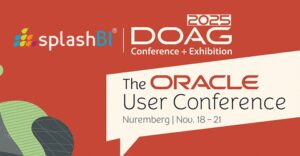People professionals need to change their approach if they are to make a true impact on their business, says Naveen Miglani.
Within every business lies an endless stream of valuable employee data. From timesheets to payroll, HR has to deal with a multitude of data types from various systems and sources. It’s HR’s job to line up this information with the rest of the business and turn it into actionable insight that holds strategic value. And with the value of HR measured on the department’s overall impact on the business – such as having the right employees in the right places, managed by the right people – making sure they have accurate data to provide this insight is paramount.
However, HR is struggling to ensure records and reports across areas such as training, learning and recruitment are working in harmony and are up to date. Additionally, as data is typically siloed in both structured and unstructured formats, organisations are finding themselves investing a lot of time and money manually reviewing and analysing reports.
So how can HR departments harmonise their data and use it to make informed decisions that drive the business forward?
A Holistic View
In a fragmented data reality, actionable business outcomes aren’t easy to come by. With so many businesses still relying on disparate systems, with one system being purely used for recruitment and another for training, it becomes impossible to align the data and process outcomes. And unless these systems are communicating and working alongside each other, information is siloed. This data disparity can lead to an isolated view of the workforce and, even if departments then gather sufficient and relevant data, it’s often too late – it’s already out of date. A holistic view is the end goal, but if HR departments continue to log their data into Excel spreadsheets they will struggle to gain this perspective.Unified Data
When data becomes inaccurate and the processes used to collect it turn laborious, building a report is suddenly a complex process. However, visual tools such as dashboards can provide HR teams with insight and direction. By integrating data from multiple sources and displaying it in a way that presents KPIs, for instance, whether a goal has been reached – or how far away it is – means HR can understand workforce performance better. This removes the ‘bottoms up’ approach that has been traditionally taken by HR when it comes to data, which included using an organisation’s current tools and systems to identify which reports could be built from current data. Instead, with the use of interactive dashboards, up-to-date metrics can all be viewed in one place, allowing organisations to report usingUnlocking the Narrative
HR leaders need to be able to identify what data they need for them to be able to take action. From pinpointing how many top performers a company has to what risk there is of an employee leaving, followed by whether the company has the resources to manage these changes in the next five years, companies need to be able to spot these trends. By presenting everything graphically in a place where it can be seen, understood and shared, dashboards can help HR unlock the hidden data narrative so that teams can analyse performance and act on their workforce data. And before you know it, gone are the days that employee data only shows a company’s turnover rate; this data can now be used to boost efficiency and performance, helping to maximise the value of employees while acquiring and retaining top talent. Just as they are an important part of other business functions and departments, dashboards and analytics should hold the same importance for HR. For example, if there is an issue with attrition, using exit interview data, companies can create a dashboard that puts the data in one place, enabling HR to identify trends clearly and address the issue.
Naveen Miglani, August 22nd, 2019
Naveen Miglani is the Co-Founder and CEO of SplashBI. Over the past 25 years, Naveen has established himself as a respected leader and global influencer in the HR technology, BI, and data reporting markets. Prior to joining SplashBI, Naveen held many senior positions such as CEO of Apex IT, EAI Leader at GE Energy, and Managing Principal at Oracle Corporation.







